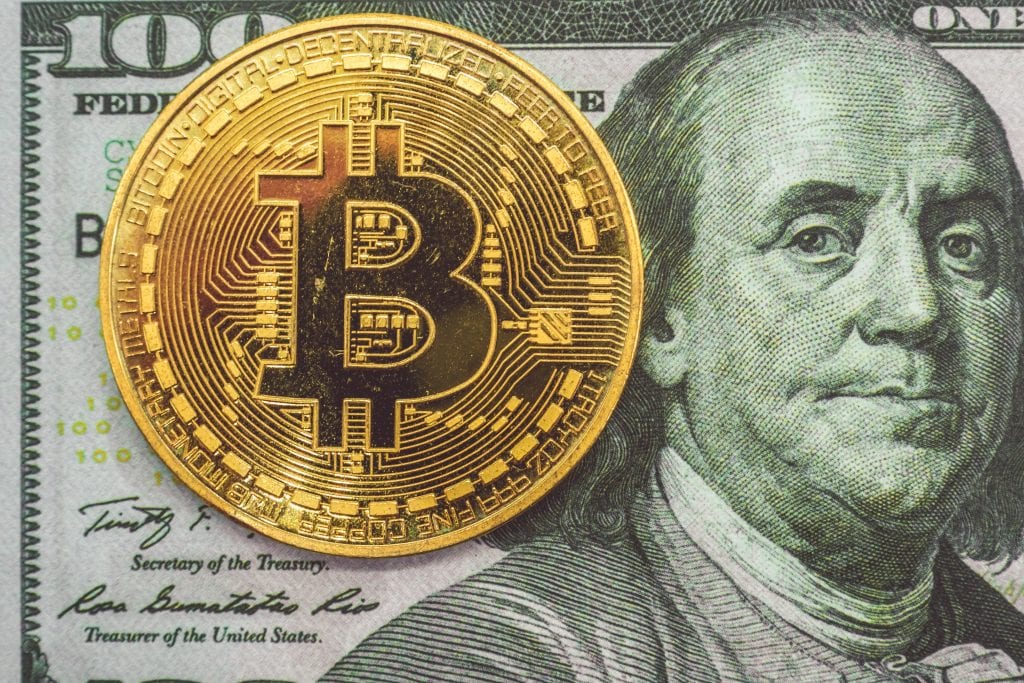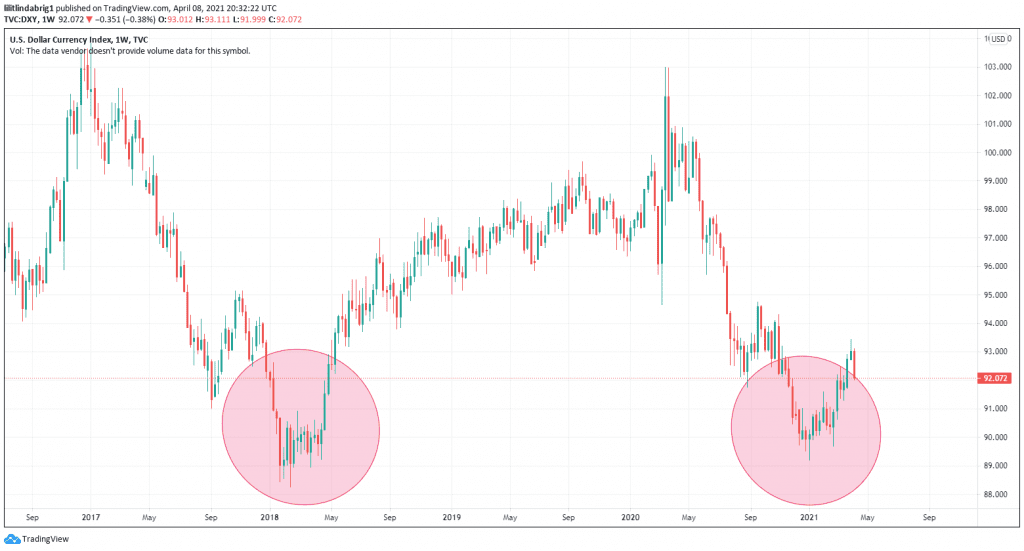
Yerevan (CoinChapter.com) — The US dollar index (Ticker: DXY) has pursued a road to recovery after logging a rough performance in 2020. It closed the pandemic-laden year down more than 6 percent.
But entering 2021, things are turning in favor of the global safe-haven asset as investors assess the prospects of faster than expected economic recovery in the US, which they believe would boost the dollar’s demand against other top foreign currencies.
Bitcoin, one of the assets that benefited the most from a bearish dollar sentiment, is meanwhile taking a break from its 1,500 percent-plus bullish price rally as the greenback rises. The cryptocurrency achieved a record high above $61,000 in mid-March but failed to follow its prevailing upside sentiment. It is now trading near $57,000.
The question prevails: are bitcoin traders getting influenced by a stronger and relatively firmer US dollar’s performance? Let’s dwell.
DXY versus Bitcoin
The US dollar index defines the greenback’s strength against six other leading fiat currencies: Euro (EUR), Japanese yen (JPY), British pound (GBP), Canadian dollar (CAD), Swedish krona (SEK), and Swiss frank (CHF).

DXY allows traders to study the dollar’s demand in the global market. Any economic turbulence reflects on the index, and the latest pandemic was no exception. The DXY dropped from $101 in March 2020 to $89 in Jan 2021. This 13% drop coincided with bitcoin’s unprecedented soar, from $5,700 in March 2020 to $38,000 in Jan 2021 (a 570% rise).

There are many indications to support the inverse correlation between DXY and BTC. The last time DXY ascended significantly in 2018, the bitcoin price experienced one of its most devastating drops — about 80%, marking back at $3,000 from the $20,000-top.
The inverse correlation is because investors tend to put their trust in the currency that has more demand at the moment. When the USD index goes down, so makes the demand for the USD on the global market. Bitcoin emerges as an alternative investment opportunity, so the demand for BTC subsequently rises.
Is DXY taking over again?

Is BTC in the bear phase for now? Judging by the bullish behavior of DXY, a certain ice period for BTC is expected, if past is any indication. Although the results might not be as grim for crypto this time around. As of April 2021, BTC has a market cap of $1 trillion, and the support and investments from large corporations. It is unlikely to drop significantly, but the inverse correlation still stands, as BTC takes a break amid the DXY’s recent recovery.
Photo by Bermix Studio on Unsplash


